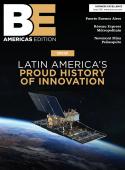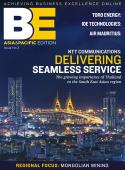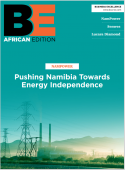
Picture this: you clear immigration in under five minutes, cross a floor of polished marble that gleams like the desert sun, and stride straight into a chauffeured car bound for your next board meeting. No chaos, no guesswork—just friction‑free travel that feels purpose‑built for people whose calendars are measured in quarter‑hour blocks. Welcome to King Fahd International Airport (KFIA), the high‑velocity hub powering Saudi Arabia’s Eastern Province and, increasingly, the Kingdom’s bold Vision 2030 agenda.
A VISION THAT STARTED ON A BLANK SHEET
When oil revenues surged in the late 1970s, Saudi planners dared to think bigger than pipelines and refineries. They flew in Yamasaki & Associates—the firm behind notable world‑expo pavilions—and Boeing’s airport consultants, asking one audacious question: What would it take to future‑proof air travel for an entire region? The answer became a 1977 master plan designed for growth, flexibility, and seamless expansion.
The blueprint lay dormant while KFIA served coalition forces during the 1991 Gulf War, but on 28 November 1999 the switch finally flipped from military to civilian. “We didn’t just build an airport,” says Eng. Abdulaziz Al‑Duailej, then Governor of the General Authority of Civil Aviation. “We built an economic engine designed to run for generations.”
GRAND SCALE, HUMAN TOUCH
Today, KFIA covers 327,000 m²—roughly 46 football pitches—across six stories. Two runways, each 4 km long, welcome Code E giants like the Boeing 747‑400, and a taxiway upgrade pipeline will soon unlock Code F capability for the Airbus A380. Yet executives rarely talk about square metres or runway grades; they remember experiences. Which is why KFIA’s architects wove cultural authenticity into the steel and glass.
Hover four floors above the arrivals concourse and you’ll find the airport mosque, a tranquil dome amid 46,200 m² of manicured gardens. Three climate‑controlled bridges whisk worshippers from terminal to prayer hall in moments, proving efficiency and reverence can co‑exist. “Every tile, every sightline is intentional,” notes Laila Al‑Subaie, Director of Passenger Experience. “Travelers should feel they’re in Saudi Arabia, not an anonymous transit box.”
For niche clientele, customization is king. The private Aramco Terminal shuttles engineers and geologists to far‑flung oil fields such as Shaybah, while a 16,400 m² Royal Terminal—complete with four stand‑alone bridges—handles heads of state and the Saudi Royal Court. The message to visiting deal‑makers is clear: whatever your mission, KFIA has a lane designed specifically for it.
THE METRICS THAT MATTER
KFIA may look serene, but its numbers tell a story of controlled acceleration.
-
12 million passengers moved through its halls in 2024—a 15 % jump over 2023.
-
99,000 flight movements, up 5 % year‑on‑year.
-
A single‑day record of 50,000 travelers set on 13 June 2024.
Behind those figures is Dammam Airports Company (DACO), a corporatised operator launched in 2017 to inject private‑sector rigour into public infrastructure. “Our people obsess over dwell times, turn‑round minutes, and predictive staffing,” says Fahad Al‑Majed, DACO’s CEO. “When we compress friction, airlines add frequencies and passengers linger to spend.”
That strategy shows in the route map: 37 airlines serve 43 destinations, with the Dammam‑Dubai shuttle topping 70 flights a week. Emirates and Gulf Air provide Gulf connectivity; Lufthansa, KLM, and Turkish Airlines keep Europe two hops away; while Air India and Pakistan International Airlines channel South‑Asian traffic. Result: Eastern Province executives can lunch in Dubai, dine in Frankfurt, and be home before the kids are asleep.
CARGO—THE QUIET POWERHOUSE
Passenger lounges might capture the Instagram reels, but pallets and containers pay serious dividends. KFIA moved 138,000 t of freight last year—an 8 % bump driven by Jubail’s petrochemical exports and a surge in Gulf‑to‑India e‑commerce. DHL Aviation, Emirates SkyCargo, Lufthansa Cargo, and Saudia Cargo operate around‑the‑clock, funnelling high‑value goods into a dedicated Cargo Village just off the main apron.
A new free‑zone enclave is slated to open by 2027, offering duty‑free warehousing, on‑site customs, and end‑to‑end cold‑chain capability. Majid Al‑Husseini, Head of Cargo Operations, is unequivocal: “If you’re a manufacturer or 3PL looking for a Gulf staging post, KFIA eliminates the last mile of uncertainty.”
ECONOMIC MULTIPLIER IN ACTION
Jobs & Skills
More than 20,000 salaries trace back to the airport—air‑traffic controllers, maintenance techs, luxury‑retail sales associates, data scientists. In partnership with Imam Abdulrahman Bin Faisal University, KFIA underwrites aviation‑engineering degrees and customer‑service diplomas, investing SAR 150 million to future‑proof its talent bench.
Diversification
Vision 2030 seeks to cut Saudi GDP’s oil dependency from 40 % to 25 % within the decade. KFIA is the Eastern Province’s sharpest diversification tool, spinning up hospitality, fintech, and cultural‑tourism revenue streams. The Royal Commission for Al‑Ahsa now packages UNESCO‑listed oasis tours that begin and end through KFIA’s gates.
Urban Catalyst
Positioned 20 km northwest of Dammam, the airport has transformed the Dhahran‑Khobar corridor into a real‑estate case study. Mixed‑use districts with co‑working lofts, smart apartments, and boutique hotels have pushed land values up 20 % since 2020. “KFIA is the nucleus of a modern aerotropolis,” says Eng. Saud Al‑Zahrani, Director of Real Estate Partnerships.
INNOVATION YOU CAN MEASURE
Green runway
A pilot solar‑canopy system over long‑term parking shaved 12 % off peak‑grid draw, the first step toward a full photovoltaic micro‑grid slated for 2030. Electric ground‑handling vehicles already dominate the apron, and next‑gen charging points will support hydrogen tugs by 2028.
Digital runway
Biometric e‑gates cut departure processing to 18 seconds on average. RFID tags follow each bag from check‑in to carousel. An upcoming KFIA app will layer personalized offers—think fast‑track security or spa reservations—on top of live gate alerts and ride‑hailing.
“Digital isn’t a buzzword; it’s how we make scale feel bespoke,” says Al‑Subaie.
STRATEGIC UPSHOT FOR C‑SUITES
-
Network Advantage – Airlines hungry for yield can leverage KFIA’s dual‑runway capacity and cohesive MRO ecosystem to add wide‑body services without slot headache.
-
Supply‑Chain Certainty – Manufacturers gain Gulf access minus the congestion premiums of older regional hubs. The Cargo Free Zone will slash dwell times and duties.
-
Investment Platform – Developers can plug into a proven aerotropolis model, co‑locating Grade‑A offices, data centres, and lifestyle‑retail under a single commercial code.
-
Innovation Testbed – Tech firms trial sensor networks, AI climate controls, and mobility‑as‑a‑service platforms on a live, 24/7 campus.
Put simply, KFIA isn’t merely a point on a flight plan; it’s a platform where capital, talent, and ideas converge at 600 mph.
LOOKING FIVE YEARS DOWN THE TAXIWAY
DACO’s transparent roadmap targets 25‑30 million passengers by 2030 through phased gate expansion and an all‑new midfield concourse. Cargo capacity will double to 250,000 t with freezer farms tailored for pharmaceuticals and agritech. Sustainability benchmarks line every milestone: net‑zero scope‑1&2 emissions by 2045, 30 % renewable‑energy mix by 2030, and full circular‑waste processing within a decade.
That level of planning gives financiers, OEMs, and logistics CEOs the confidence to forecast ROI without fretting about downstream constraints.
FINAL APPROACH
Executives thrive on velocity—decisions, deals, and growth curves must all move faster than the market. KFIA understands this instinct because it was engineered for it. From the minute you disembark to the moment new revenue streams take flight, the airport acts as both runway and accelerant.
And in a world where growth is increasingly gated by inadequate infrastructure, that might be the most under‑appreciated competitive edge Saudi Arabia now possesses.
Because here—the heart of the Eastern Province desert—the sky isn’t a limit; it’s simply the next unit of measurement.









